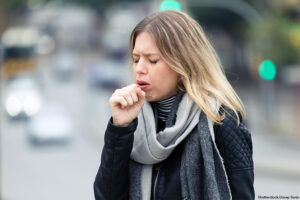
The coronavirus (COVID-19) crisis looks different for all of us, but everyone is affected. Some states have closed schools and businesses indefinitely; some states have instituted lockdowns; some states have seen a steadily climbing rate of infection, while others remain relatively untouched. The only thing certain right now is that we all need to work together to prevent the spread of the virus as much as possible. Here, btw tries to answer some common questions that you may have about the disease, how to prevent it, and what precautions we should all be taking right now to stay safe.
How Bad Is the Crisis?
Last Wednesday, March 11, the World Health Organization (WHO) officially declared COVID-19 (coronavirus) a pandemic. That means that the disease is prevalent over a whole country or the world. This is more critical than an epidemic, which is specific to a certain area.
It’s the first official pandemic declared since the “swine flu” (H1N1) in 2009, which killed more than 18,000 people in 214 countries. COVID-19 is expected to have an even more significant impact. In just two weeks, the number of countries affected tripled, and while the disease originated in China, there have now been more cases outside of China than inside of it.
Worldwide, as of Tuesday morning,173,344 people in 152 countries have become infected with coronavirus, and 7,019 have died from the disease. Here in the United States, the places hardest hit have been Washington state, New York, and California. As of Tuesday morning, there have been 4,556 documented cases in the United States, with 85 deaths. (Note: It’s important to remember that these numbers change by the hour.)
What If I Get Sick?

Symptoms of the disease vary. Elderly people and people with immune deficiency disorders are most affected, while so far, children seem much less affected. Most people who become infected will experience symptoms like a bad respiratory infection or pneumonia: dry cough, runny nose, and high fever. Sore throat and mild body aches have also been experienced. However, the rate of survival drops dramatically for older adults and for other people with pre-existing breathing conditions, such as asthma, emphysema, and lung cancer. Experts say that a vaccine is in the works, but that it will likely take a year to a year and a half for the public to gain access.
How Do I Stay Safe?
The Centers for Disease Control and Prevention urge everyone to take common-sense health precautions such as:
- washing their hands frequently and for at least 20 seconds;
- using hand sanitizer if handwashing isn’t an option;
- avoiding contact with people who have become ill; and
- staying home if you are sick.
According to the World Health Organization, you don’t need to wear a face mask unless you are sick or caring for someone who is.
Understanding the “New Normal”
You’ve probably heard the terms “social distancing,” “quarantine,” and “flattening the curve” a lot this week. But what do they mean, and how do they affect you?
Social distancing means deliberately increasing the physical distance between people so that they won’t spread the disease to one another. In the case of COVID-19, experts recommend that people stay at least six feet apart. Social distancing is the reason why large events, schools, and other businesses are closing down right now.
Quarantine means physically separating someone who has been exposed to keep them from exposing the rest of the population. In the case of COVID-19, experts are asking anyone who may have been exposed, or who has traveled to certain areas of the world, to “self-quarantine” for fourteen days. This means that you should stay at home and not have visitors. If someone is confirmed to have the virus, he or she will be isolated, which means staying completely away from other people.
“Flattening the curve” refers to a mathematical graph of the rate of infection. To explain: if everyone just goes about their normal lives right now, a lot of people will become infected very quickly. This could potentially overwhelm the health care system, as there won’t be enough beds, medical supplies, or medical personnel for everyone who is sick. But if we engage in preventative measures such as social distancing and self-quarantine, we can potentially “flatten the curve,” meaning that while the same number of people will likely become infected, it will happen at a much slower rate which our health care system can support.
